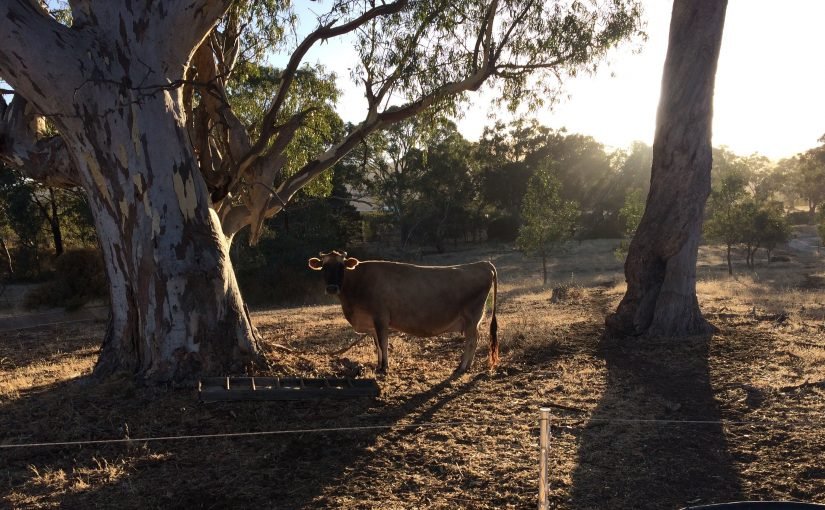Things just keep progressing.

Our floor just went in. AHHHHH! Now it really feels like a factory! The list is definitely getting shorter, although I’m sure the list of still-to-do just keeps growing, hmmm. Install the doors, finish the little jobs such as door seals, install all equipment/sinks/benches, get equipment working, set up the refrigeration system for cold water storage, finish the hot water system, install solar hot water system, finish Food Safety Plan, GET LICENSED!
The big one we’ve been working on recently is the refrigeration systems. Oli wrote in a previous post about the reuse of refrigeration systems and the huge effect refrigerant gases have on exacerbating global warming. We’ve often mentioned Drawdown, an amazing research project proposing the 100 most effective ways to reduce global warming. Refrigerant Management is ranked as the #1 solution. When I first read this, with little knowledge of the subject, I imagined things like old fridges being dumped here in Australia or sent off to poorer countries who didn’t have the means of proper disposal. I certainly didn’t realise the extent to which poor disposal practices happens right here in Australia. We’ve heard so many stories recently of people, who certainly should know better, just cutting the pipes and releasing the gases and rubbish tips running over refrigerant system units with excavators instead of having the gas reclaimed for safe disposal. Everywhere in this country we are surrounded by refrigeration. Most homes, shops, offices and vehicles are equipped with one or more air conditioner, fridge or freezer. Almost all of which end up leaking their gases into the atmosphere due to poor maintenance and more often than not, don’t have the gas recovered when being decommissioned. Why? Mainly the cost of doing it and lack of awareness.
Then there is the practical element of how refrigeration effects our dairy. I’ll need a cool room, which we now have with a new refrigeration unit installed! woohoo! There is the chilling of the milk. Regulation requires that all raw milk be chilled and stored below 5°c within 3.5 hrs from the start of milking. Then, once pasteurised, the milk must once again be chilled and stored below 5°c. We are using a 200ltr jacketed vat for both the storing and pasteurising of the milk, which will then be bottled for fresh milk or transformed into yogurt. All these steps require a large amount (we’re aiming for 2300ltrs) of cold water (below 2°c) on hand. Another huge electricity user and refrigeration unit.

We’ve learnt many lessons on-the-job building this dairy. A big one was not having the old milk vats, which will store the cold process water, pressure tested before buying them. The first 2 we bought have leaks and wont hold refrigerant gas. We then set about finding some new ones, preferably with the refrigeration unit connected and operational, and this time taking our fridgy Graham with us!

This next part really stopped us in our tracks. We found an operational milk vat, 2 of them, with reconditioned compressors, and a new hot water service, hoses, heat exchanges, buckets, etc. We could have bought the whole dairy if we wanted. The dairy we bough from was being pulled apart as the dairy farmer had taken his life in January. Being in his dairy, hearing the stories of his life, young family, debt and death really hit us hard. Hearing about the training which milk tanker drivers receive as they are the ones who often find farmers in this situation was striking. I may have been angry in my last post but this just made it all too real, how common this story is…
Unacceptable.
It was difficult to feel positive about dairy farming on that farm, an old dairy farm which had been reconditioned and re-opened only 18 months ago. It will stay as a very strong reminder for us; every time we look at those vats. With the impending drought on our door step, how can we support those who grow our food to get through the hard times? What can we do differently? Hopefully paying out respects and sharing this story may help others to see the severity of this situation for many farming families.

So thank you all again for the generous support you have shown us. We will get there.


Leave a Reply